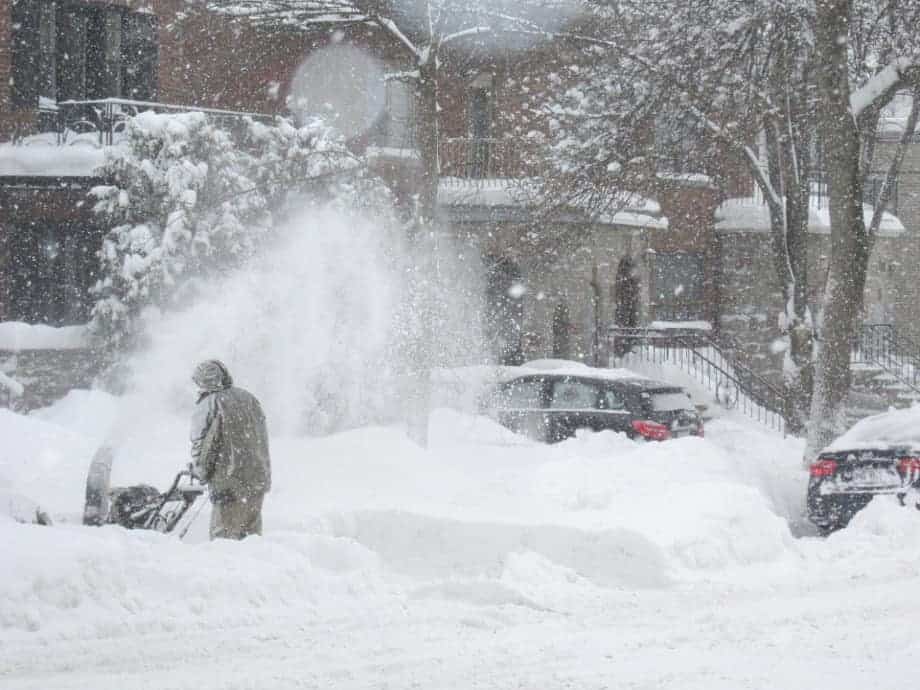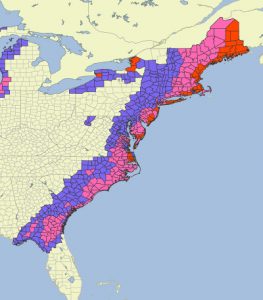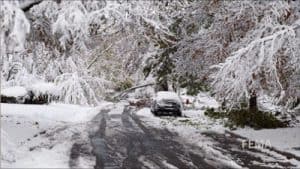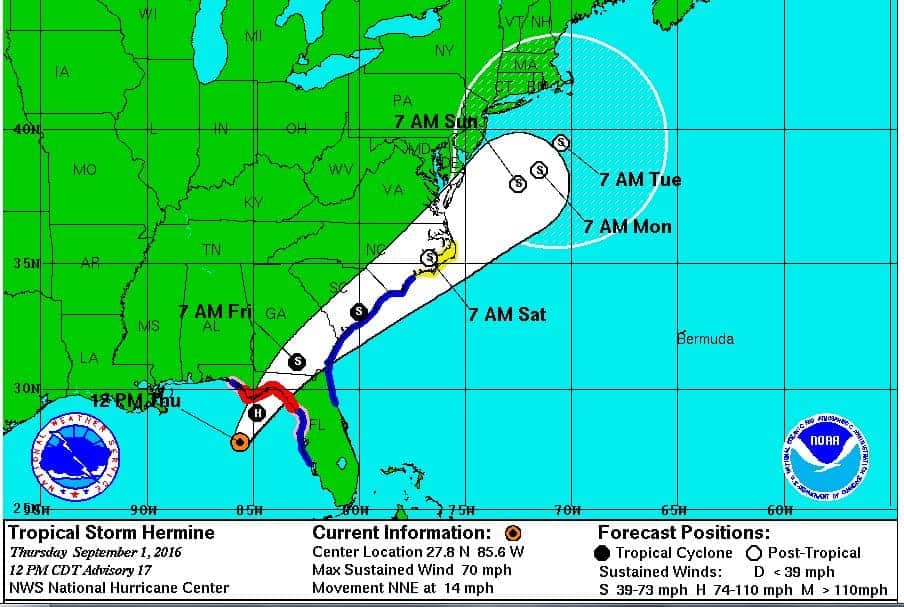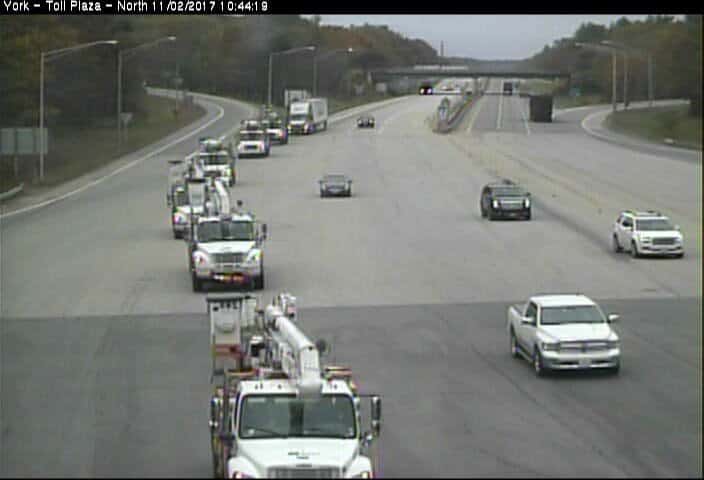Millions Lose Power as Blizzards, Snowstorms, Nor’easters Bring Snow with Wind and Ice
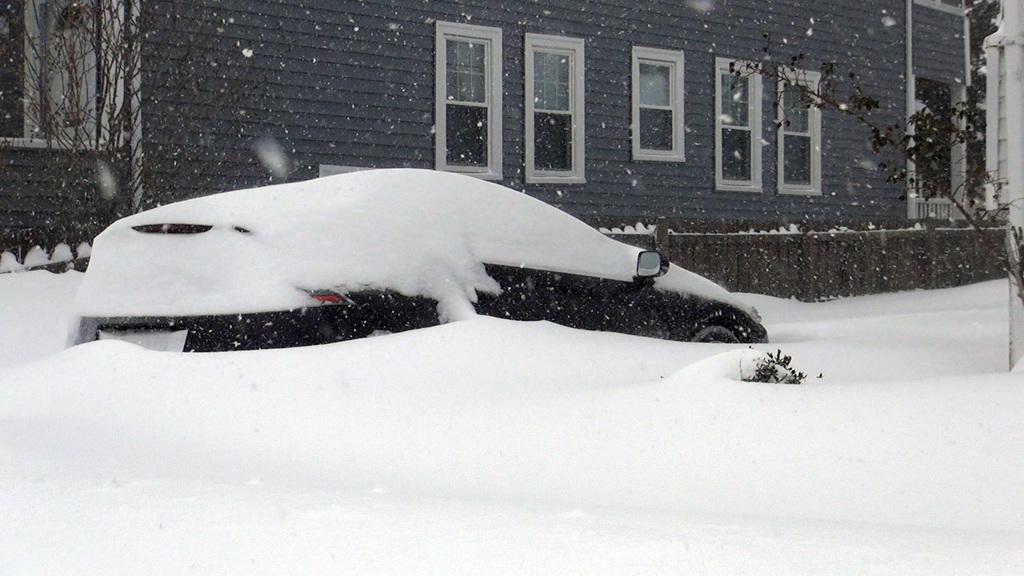
Three March Nor’easters buried the East Coast with up to three feet of snow and millions of Power Outages.
If you live along the East Coast, you have probably seen enough snow this year to last a long time. Nor’easters are Extratropical Cyclones that typically form over the Atlantic Ocean in conjunction with a low-pressure system that moves offshore. Most common from October through March, they can bring heavy rain, wet snow, and ice along with wind and coastal flooding. Blizzard conditions often accompany high wind and heavy snow.
The Anniversary Storm on November 3 was the first of six Nor’easters since October.
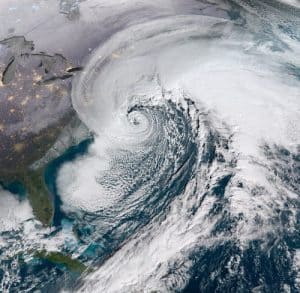
Nor’easters are extra-tropical storms with high winds, heavy rain and snowfall, and storm surge. Note the signature comma shape and size of the weather pattern that extends from the tropical Caribbean to the Northern Atlantic Ocean
Nor’easters turn counterclockwise. The “Nor’easter” name refers to the wind direction—from northeast to southwest— in the northwest quadrant of the storm which brings moisture off the ocean and leaves it behind as precipitation. A weather system moves off the East Coast over the warm Atlantic and collides or merges with a much colder polar air mass.
Low pressure draws warm, moist air up from the southern latitudes while cold polar air rushes down from the north. As the two systems come together, they turn around a central core that often looks much like the eye of a hurricane but has an elongated comma shape rather than circular. Meteorologists call the turning mass of air an extra-tropical cyclone because it forms outside the tropics.
Sustained winds can reach well above hurricane force with even higher wind gusts. On weather maps, they appear as a giant comma and can stretch from the Gulf of Mexico to the northern Atlantic Ocean.
Nor’easters sometimes earn the name ‘Bomb Cyclone’ because the sudden drop in barometric pressure causes explosive growth and impact of the weather system.
Hurricane-Force Winds have a sustained speed of 74 MPH or higher.
The high winds and low pressures associated with Nor’easters can bring coastal flooding in the form of storm surge and cause exceptionally heavy surf near shore, and larger than average waves offshore.
The high winds, ice accumulation, and heavy snow cause widespread power outages. Nor’easters are often blamed for Fatalities. Authorities attributed nearly forty deaths on the four Nor’easters this year.
2018 Atlantic Hurricane Season May Mirror Near-Record 2017—Experts
Grayson
The first Nor’easter of 2018 kicked off just a few days after the New Year when Winter Storm Grayson impacted the East Coast with snow, ice, and rain from Florida to Maine and resulted in blizzard warnings, winter storm warnings, and winter weather advisories all along the East Coast. The blizzard left than two feet of snow from the Mid-Atlantic to New England and Atlantic Canada. Tallahassee, Florida recorded measurable frozen precipitation and snow caused Savannah International Airport in Georgia to close.
Standby vs Portable: Need to Know
Blizzards occur when sustained 35 MPH winds accompanied by heavy snow reduce visibility to less than one-quarter mile for three hours or more. Whiteout conditions often accompany blizzards.
Sustained winds reached 90 MPH with gusts up to 126 MPH. Grayson caused 22 fatalities, hundreds of car collisions, 300,000 power outages, and more than 4000 flight cancelations. The massive ocean swells in the Bahama’s caught cruise ships off guard and battered them with 30-foot waves. Passenger compartments flooded, and some passengers reported being thrown out of bed by the rolling of the boat.
The winter storm was the second Nor’easter of the 2017-2018 winter to affect the northern East Coast. The storm in early December brought the first snowfall to many parts of New England.
Winter Emergency Preparedness Checklist
Riley—Quinn—Skylar
After a period of record warmth in February, March came in roaring in with two powerful Nor’easters. Riley impacted the East Coast with heavy snow, rain, ice, storm surge, and flooding. The storm caused at least 15 casualties, and more than 1.9 million households lost power for more than a week as the storm’s impact hampered restoration efforts. Riley dumped up to two feet of snow in some places and in New York, the storm surge rivaled that of Hurricane Sandy (2012).
Riley began to dissipate late on March 2 and moved out over the Atlantic on March 3. Just days later on March 6, Winter Storm Quinn struck with greater intensity than either of the two previous storms. Quinn left up to three feet of snow in its wake, added more than 1 million outages to those already without power, and caused the cancellation of hundreds of flights. Two fatalities resulted from to the storm.
Following Winter Storm Quinn, some school districts canceled the annual spring break because students had already missed too much school and would have to make the time up in the summer.
With power finally restored to most utility customers who lost it, March 11 saw the convergence of several low-pressure systems over the Southwest. 24 hours later, Winter Storm Skylar formed the sixth Nor’easter of Winter 2017-2018 and the third in just 11 days. Skylar brought 30 inches of snow to Maine, 10 inches in Kentucky where 12 inches is the typical yearly total, and 6 inches to Illinois.
Nantucket experienced a three-foot storm surge.
Hurricane-force winds caused blizzard conditions, knocked down trees and branches, and brought another round of power outages (300,000) to a Northeast weary of digging out and throwing out spoiled food.
Hurricane Preparedness—Know Your Risks—Make Your Plans Now
Mississippi Hail
While Nor’easters pummel the Northeast, hail in Mississippi piled up to a foot deep in some place. These Videos Courtesy of our founder Jerry Hertsch
Wild weather! #mswx #Hail pic.twitter.com/f6wsPjsrMn
— Norwall PowerSystems (@NorwallPowerSys) March 19, 2018
The #hail kept pilling up! #mswx pic.twitter.com/07DeTqeDJj
— Norwall PowerSystems (@NorwallPowerSys) March 19, 2018

